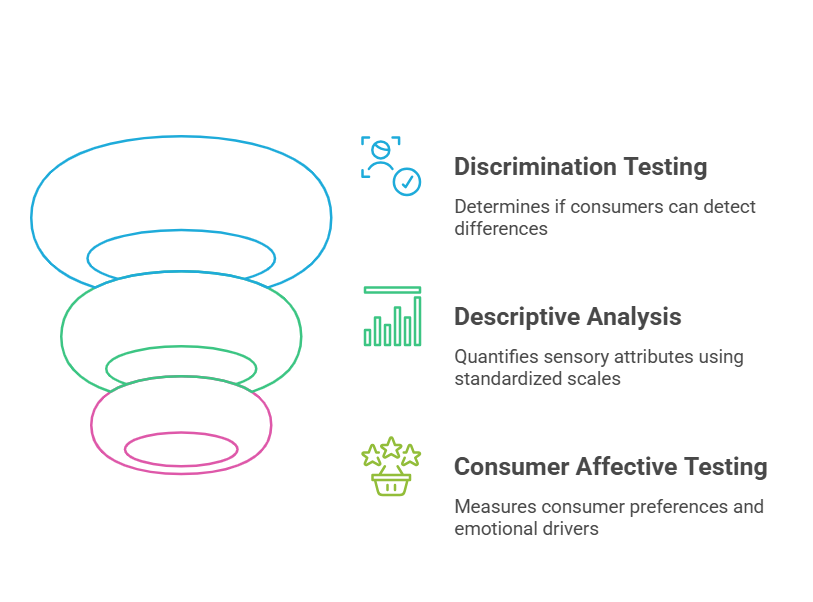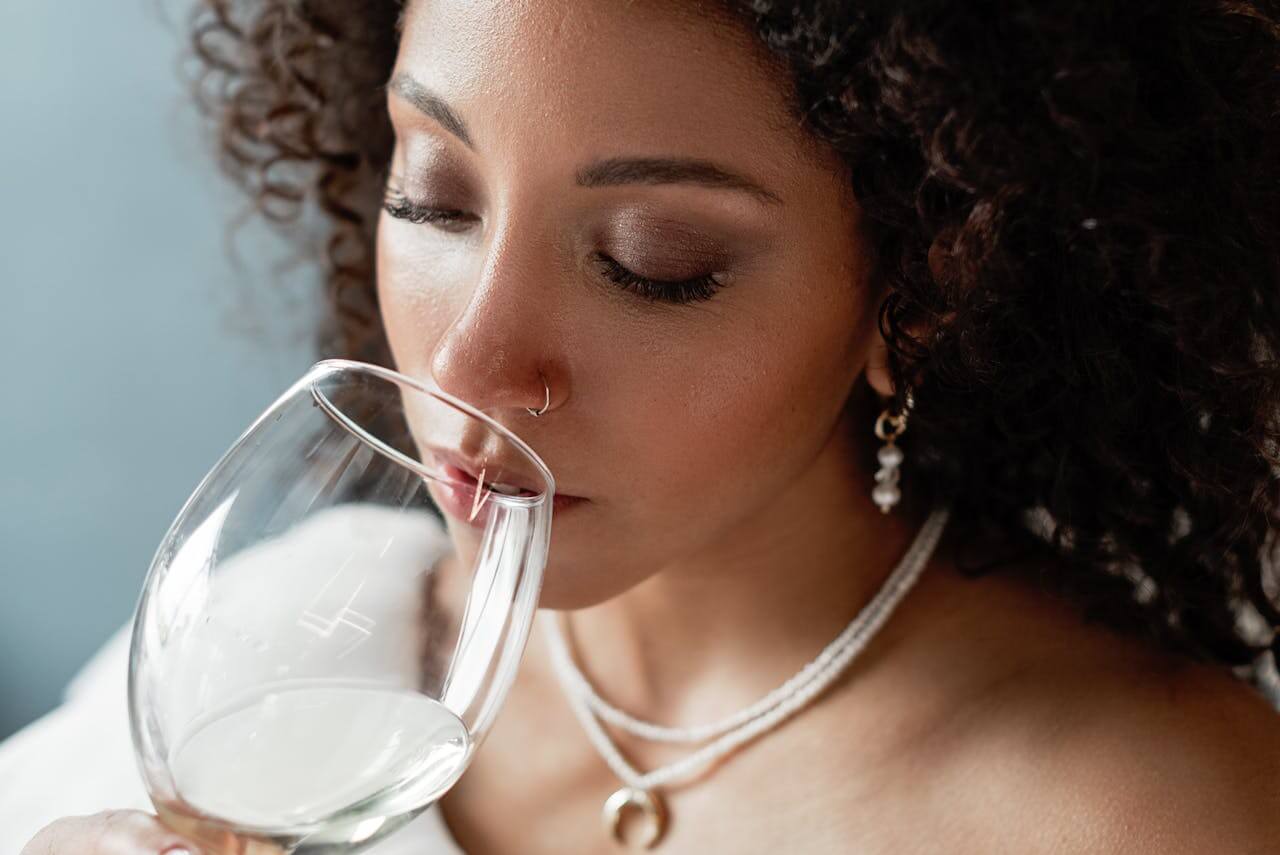Sensory Product Testing in New York

What makes sensory product testing in New York different? It’s the unparalleled diversity of testers we can access—from Wall Street bankers to Brooklyn artists—giving brands affordable and accurate insights they simply can’t get elsewhere.
I’ll never forget the first time we conducted sensory product testing in New York for a major beverage client. The look on their CEO’s face when we revealed that 73% of their target audience preferred their competitor’s flavor profile? Priceless. That’s the brutal honesty sensory product testing in New York delivers—and why some brands fear it while others embrace it as their secret weapon.
Table of Contents
✅ Listen to this PODCAST EPISODE here:
Why New York Is the Ultimate Testing Ground for SIS
New York is not just another market—it’s a crystal ball. The sensory feedback we get from New York panels typically predicts national trends by 6-18 months.
Where else can you access consumers from virtually every cultural background, income level, and age group within a single metropolitan area? นิวยอร์ก allows us to gather insights across multiple demographics simultaneously, providing a global perspective without the travel budget.
New York consumers’ fast-paced, trend-setting nature means they often predict national and international trends. So, a successful sensory product testing in New York can give you a glimpse into your product’s future performance across other markets. I’ve seen this pattern repeat itself countless times across categories from cosmetics to food and beverages.
The Science Behind Sensory Evaluation
I was skeptical about the value of formal sensory testing until I saw how differently trained panelists evaluated our product compared to standard focus groups. The specificity and consistency of the feedback was like night and day—it gave our R&D team precise targets for improvement. (From a luxury fragrance developer who revolutionized their development process after working with us)
Did you know that even the room’s color can affect how people perceive taste? Or that serving temperature variations as small as 3 degrees can dramatically alter texture perception? These details matter in professional sensory product testing in New York, and less experienced research providers often overlook them.
Proper sensory testing methodology is a rigorous scientific process. our approach to sensory product testing in New York involves carefully controlled environments, blinded samples, and statistically valid panel sizes. We’ve invested in specialized facilities throughout the city to ensure consistent testing conditions regardless of which neighborhood we’re tapping into.
Furthermore, the training of sensory panels is perhaps the most critical element of reliable research. Random consumers might tell you if they “like” something, but adequately trained panelists can articulate precisely why, using consistent terminology and evaluation frameworks.
Types of Sensory Testing for Different Objectives
“Most product developers are shocked to learn that up to 80% of new product failures can be traced to sensory issues rather than functional shortcomings.

✅ Discrimination testing helps determine whether consumers can detect differences between products. It’s often the first step in our qualitative research approach when you’re making formulation changes and need to know if they’re perceptible. We’ve actually saved clients millions by confirming that costly ingredient upgrades weren’t actually detectable to consumers, allowing them to optimize their formulations for cost without sacrificing perceived quality.
✅ Descriptive analysis involves trained panelists who quantify specific sensory attributes of products using standardized scales. This approach creates a detailed sensory profile that can be mapped against consumer preferences to guide product development with surgical precision.
✅ Consumer affective testing measures how much people like your product and which aspects drive their preference. While less technical than other methods, when done properly, consumer testing is invaluable for predicting market success. Our approach to consumer sensory product testing in New York incorporates psychological insights to get beneath surface-level preferences and understand the emotional drivers of product adoption.
Industry-Specific Sensory Testing Applications

What impressed me most was how SIS translated complex sensory data into clear direction for our product development team. They didn’t just tell us what consumers thought; they told us exactly what to do about it—with projected ROI for each potential modification, acknowledged a VP of Innovation who credits our sensory product testing in New York with saving their company from a potentially disastrous product launch.
Food and beverage companies have the most obvious need for sensory product testing in New York, but our industry expertise extends far beyond to include cosmetics, textiles, home goods, and more.
We’ve helped restaurants, CPG brands, and ingredient suppliers optimize every aspect of their offerings through comprehensive sensory product testing in New York. For instance:
✔ Cosmetics and personal care products live or die by their sensory properties. The slip of a serum, the cushion of a cream, the lingering notes of a fragrance—these attributes can’t be measured by machines alone. Human sensory product testing in New York provides the subjective feedback necessary to create products that don’t just perform well but feel luxurious and satisfying to use.
✔ Home goods and textiles also benefit tremendously from sensory product testing in New York, though many brands overlook this application. The hand feel of bedding, the perceived softness of tissue, and the emotional response to a room fragrance all determine consumer preference and loyalty. Our specialized textile panels can discern and articulate subtle differences in fabric properties that ordinary consumers feel but struggle to describe.
What Is the Business Impact of Professional Sensory Testing?
Reduction in product development costs is one of the most immediate benefits of sensory product testing in New York. One client saved over $2.3 million in development and marketing costs when our sensory testing revealed that their new formulation—despite impressive technical specifications—created a texture experience that 67% of consumers found off-putting.
Competitive advantage through sensory differentiation. Through sensory product testing in New York, we helped a beverage brand identify an untapped opportunity in the mouthfeel dimension that competitors had overlooked. This resulted in a product that consumers consistently preferred in blind tests against category leaders.
Price optimization allows brands to charge premium prices for products with superior sensory experiences. After comprehensive sensory product testing in New York revealed that our client’s premium skincare formula created a distinctive sensory signature that consumers associated with luxury, they successfully increased their price point by 22% with no negative impact on purchase intent.
SIS International’s Sensory Panel Training Process

- Establishing a reliable sensory baseline is the foundation of all our sensory product testing in New York. Unlike many research firms that use ad-hoc consumer panels, we’ve developed a rigorous training methodology that transforms ordinary tasters into analytical instruments capable of consistent, objective evaluation.
- Our training process begins with recruitment and screening of potential panelists based on their sensory understanding. We conduct preliminary tests assessing basic tastes, smells, and textures while considering factors such as availability, motivation, health status, and potential biases.
- ที่ initial training modules focus on developing a shared sensory vocabulary and consistent evaluation techniques. Panelists learn to identify and articulate specific product attributes using standardized terminology, use rating scales consistently, and practice simple discrimination tests like triangle tests to hone their ability to detect subtle differences between product samples.
- Advanced training techniques elevate our sensory product testing in New York to exceptional precision. Panelists learn descriptive analysis methods to identify and rate the intensity of various sensory attributes using structured evaluation frameworks.
- We maintain impeccable testing environments with proper lighting, temperature control, and minimal distractions. Sample presentation is carefully standardized, using coded containers to avoid bias, and panelists receive regular feedback on their performance to continually improve their evaluation skills.
- ที่ ethical considerations of sensory testing are carefully managed throughout the process. We actively address potential biases related to personal preference, expectation effects, and order of presentation to ensure the integrity of our sensory product testing in New York.
The SIS International Approach to Sensory Testing
Our rigorous panel recruitment process ensures that sensory product testing follows our proven research methodology and yields reliable, consistent results. We maintain a database of over 25,000 New York residents pre-screened for sensory acuity across various attributes. Depending on your product category, we can quickly assemble specialized panels with heightened sensitivity to specific sensory inputs relevant to your testing needs.
We believe that customized testing protocols yield the most actionable insights. Cookie-cutter approaches to sensory product testing in New York might be cheaper initially, but they rarely provide the specific guidance brands need to make confident decisions. Our methodologies are tailored to your unique objectives, competitive context, and category dynamics.
Key Insights Summary
Here are the key insights about sensory product testing that our decades of experience at SIS International have revealed:
- Sensory product testing in New York provides access to unparalleled consumer diversity, offering insights that predict global performance.
- Proper sensory evaluation combines scientific methodology with trained panels capable of articulating subtle product differences.
- Different testing approaches serve different objectives: discrimination testing detects differences, descriptive analysis creates detailed profiles, and affective testing measures preference.
- Industry applications extend beyond food and beverage to include cosmetics, textiles, home goods, and virtually any product with sensory attributes.
- SIS International’s approach combines panel expertise, customized methodologies, and business acumen to deliver actionable insights.
- Our global capabilities, experienced staff, and efficient processes make us a preferred partner for sensory product testing in New York and worldwide.
- Case studies demonstrate the concrete business impact of well-executed sensory research, from reformulation guidance to pricing validation.
What Makes SIS International a Top Sensory Testing Provider?
Here are seven reasons businesses trust SIS International for their most critical sensory research needs:
- GLOBAL REACH: Our sensory panels in New York are just the beginning. We can replicate methodologies across 120+ countries, allowing you to understand how sensory preferences vary across markets.
- 40+ YEARS OF EXPERIENCE: Since 1984, we’ve refined our approaches to sensory product testing in New York and beyond, developing proprietary methodologies that yield more actionable insights than standard industry practices.
- GLOBAL DATA BASES FOR RECRUITMENT: Our panel management system maintains detailed profiles on over 100,000 potential testers worldwide with verified sensory capabilities, allowing rapid assembly of precisely targeted panels.
- IN-COUNTRY STAFF WITH OVER 33 LANGUAGES: Cultural nuance matters in sensory evaluation. Our multilingual team ensures nothing gets lost in translation when capturing subtle sensory descriptions.
- GLOBAL DATA ANALYTICS: Our proprietary analysis tools can identify patterns across markets, helping you understand universal sensory preferences versus culture-specific reactions.
- AFFORDABLE RESEARCH: Our efficient processes and established infrastructure allow us to offer world-class sensory product testing in New York at rates that deliver exceptional ROI.
- CUSTOMIZED APPROACH: We never use off-the-shelf methodologies. Each sensory project is designed around your specific business questions and product category requirements.
Frequently Asked Questions About Sensory Product Testing
Below are answers to some of the most common questions we receive about sensory evaluation. You can also find us listed as a top research provider in Quirk’s Directory (if you’re looking for verified credentials)
What exactly is sensory product testing and why is it important?
Sensory product testing evaluates how consumers perceive products through their five senses: sight, smell, taste, touch, and hearing. It’s important because sensory experiences heavily influence consumer purchase decisions and product loyalty, often more than functional benefits alone.
How is professional sensory testing different from simply gathering opinions?
Professional sensory product testing in New York uses controlled environments, trained panelists, blinded samples, and statistical analysis to generate reliable, actionable data. Casual opinion gathering lacks these controls and typically yields subjective feedback that can’t reliably guide product development.
How many people should be included in a sensory panel?
For technical descriptive panels, 8-12 highly trained individuals can provide statistically valid results. For consumer affective testing, sample sizes typically range from 75-150 participants depending on the product category and test objectives. Sensory product testing in New York allows us to recruit specialized niche audiences that might be difficult to access in other markets.
How long does sensory testing typically take?
Simple discrimination tests can be completed in as little as one week. Comprehensive descriptive analysis with trained panels typically requires 3-4 weeks. Consumer testing timelines vary based on recruitment criteria, but most sensory product testing in New York can be completed within 2-6 weeks from project initiation to final report.
Can sensory testing predict market success?
While no research can guarantee market success, properly designed sensory product testing in New York has proven highly predictive of consumer acceptance and preference. When combined with other market research methods, it significantly improves the accuracy of market performance forecasts.
How do I know if my product would benefit from sensory testing?
If your product is experienced through any of the five senses, it can benefit from sensory testing. This includes virtually all consumer products from foods and beverages to personal care items, textiles, home goods, and digital interfaces where visual and auditory experiences matter.
We’ve recently expanded our personal care products consulting services to provide even more specialized sensory evaluation for beauty brands. Our newly developed approach to personal care testing combines traditional sensory evaluation with cutting-edge market insights to create winning formulations.
สถานที่ตั้งโรงงานของเราในนิวยอร์ก
11 E 22nd Street, ชั้น 2, นิวยอร์ก, NY 10010 T: +1(212) 505-6805
เกี่ยวกับ เอสไอเอส อินเตอร์เนชั่นแนล
เอสไอเอส อินเตอร์เนชั่นแนล เสนอการวิจัยเชิงปริมาณ เชิงคุณภาพ และเชิงกลยุทธ์ เราให้ข้อมูล เครื่องมือ กลยุทธ์ รายงาน และข้อมูลเชิงลึกเพื่อการตัดสินใจ นอกจากนี้เรายังดำเนินการสัมภาษณ์ การสำรวจ การสนทนากลุ่ม และวิธีการและแนวทางการวิจัยตลาดอื่นๆ ติดต่อเรา สำหรับโครงการวิจัยการตลาดครั้งต่อไปของคุณ



